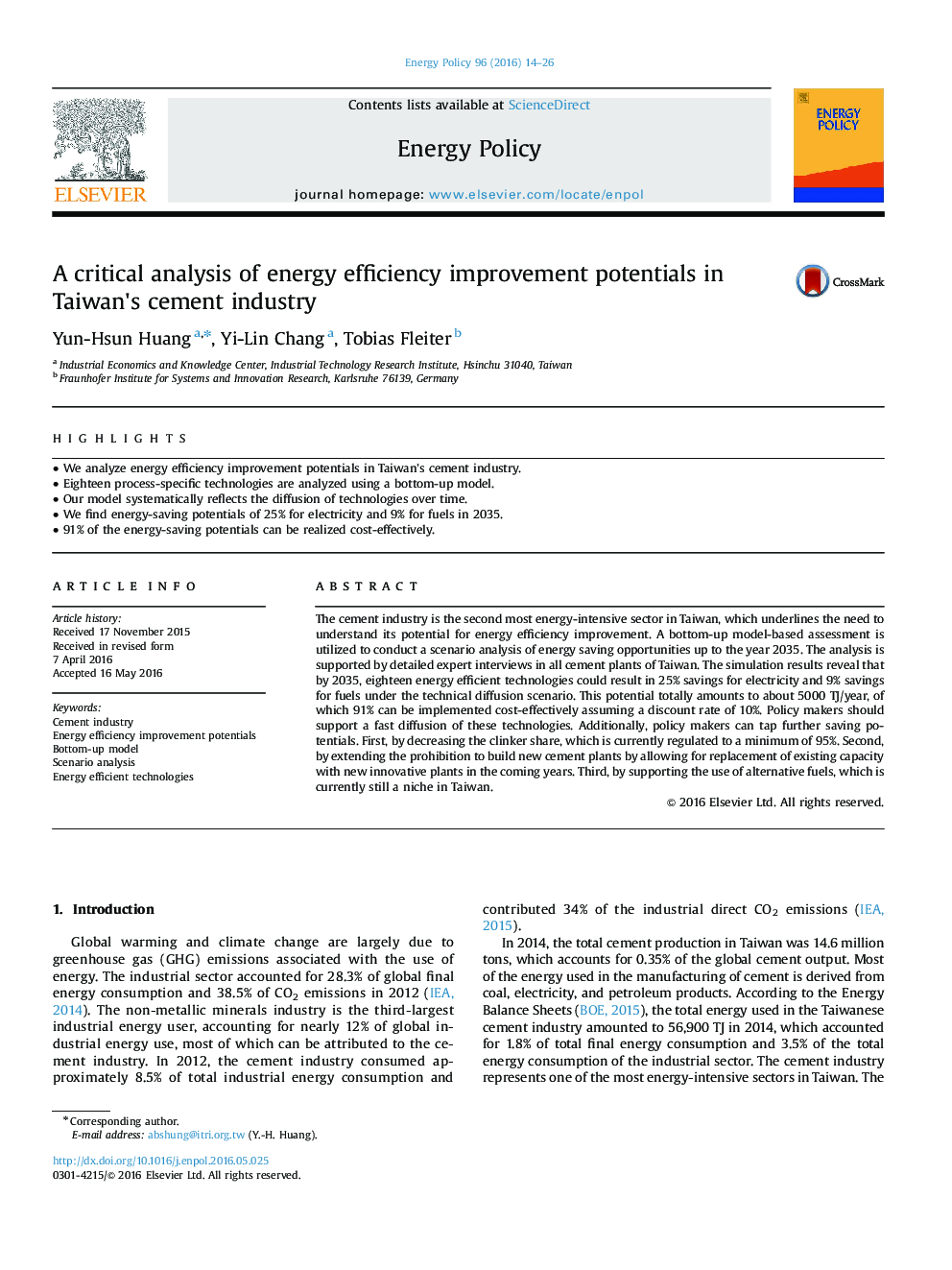| Article ID | Journal | Published Year | Pages | File Type |
|---|---|---|---|---|
| 7398700 | Energy Policy | 2016 | 13 Pages |
Abstract
The cement industry is the second most energy-intensive sector in Taiwan, which underlines the need to understand its potential for energy efficiency improvement. A bottom-up model-based assessment is utilized to conduct a scenario analysis of energy saving opportunities up to the year 2035. The analysis is supported by detailed expert interviews in all cement plants of Taiwan. The simulation results reveal that by 2035, eighteen energy efficient technologies could result in 25% savings for electricity and 9% savings for fuels under the technical diffusion scenario. This potential totally amounts to about 5000 TJ/year, of which 91% can be implemented cost-effectively assuming a discount rate of 10%. Policy makers should support a fast diffusion of these technologies. Additionally, policy makers can tap further saving potentials. First, by decreasing the clinker share, which is currently regulated to a minimum of 95%. Second, by extending the prohibition to build new cement plants by allowing for replacement of existing capacity with new innovative plants in the coming years. Third, by supporting the use of alternative fuels, which is currently still a niche in Taiwan.
Related Topics
Physical Sciences and Engineering
Energy
Energy Engineering and Power Technology
Authors
Yun-Hsun Huang, Yi-Lin Chang, Tobias Fleiter,
